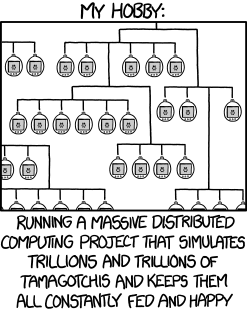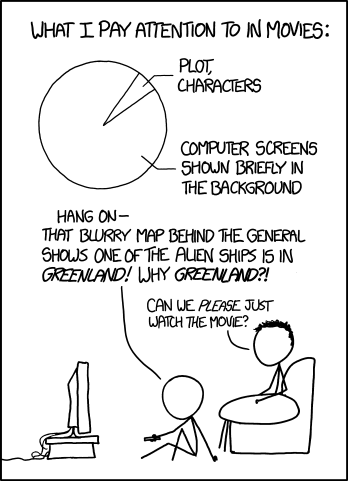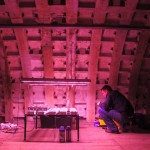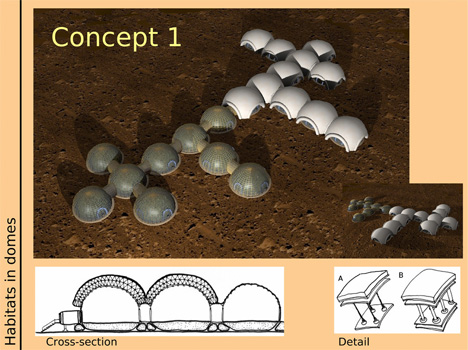Writing strong exposition in speculative fiction (or SF, the umbrella term for fantastical fiction genres such as science fiction, fantasy, paranormal and horror) is a balancing act. It’s like watering a plant. Too little water and it dries up and dies; too much water and it rots and drowns. Information is to your audience what water is to a plant—it’s the life of the story, and yet you have to keep it in balance. Too much raw information up front and the reader can’t keep it all straight; too little information and the reader can’t figure out what’s happening. The result in either case is confusion, impatience and boredom.
This balance is key in any kind of storytelling, but is especially difficult to achieve in science fiction and fantasy because our stories take place in worlds that differ from the known world. We not only have to introduce characters and immediate situations, we also have to let readers know how the rules of our universe differ from the normal rules and show them the strangeness of the place in which the events occur.
—by Orson Scott Card
The trick is to reveal information very carefully, and usually by implication. The best way to tell you what I mean is to show you, using the opening line of Octavia E. Butler’s novel Wild Seed. (I’ve chosen this book because nobody handles exposition better than Butler—and also because it’s a terrific novel that you ought to read for the sheer pleasure of it.)
Here’s the first sentence:
Doro discovered the woman by accident when he went to see what was left of one of his seed villages.
You have just been given an astonishing amount of information—but it has been done in such a way that you probably aren’t aware of how much you already know.
Let’s take a look at some factors to consider at your own story’s opening.
[Did you know there are 7 reasons writing a novel makes you a badass? Read about them here.]
Naming
In this classic example from Butler, we first know the name of the viewpoint character: Doro. Later in the novel we’ll learn that Doro has many names, but Butler gives us the name by which he thinks of himself—and whenever we’re in Doro’s viewpoint that’s the only name used for him. Lesser writers might have kept changing the name of that viewpoint character, thinking they’re helping us by telling us more information:
The starship captain walked onto the bridge. Bob glanced over and saw the lights were blinking. “What are you thinking of, Dilworth?” said the tall blond man.
Is Bob the starship captain? Or is Bob Dilworth? And is it Bob or the starship captain who is the tall blond man? One tag per character, please, at least until we know them better. Above all, don’t coyly begin with pronouns for the viewpoint character and make us wonder who “he” or “she” is—give us a name first, so we have a hook on which to hang all the information we learn about that character.
Second, we know that Doro will discover “the woman,” and we assume that this discovery will be important to the story. Because Butler is a first-rate writer, that assumption is correct—she would never mislead us by placing a trivial character so portentously in the opening sentence. Yet she doesn’t name the woman yet. In part this is because naming two characters immediately is often confusing. Too many names at once are hard to keep track of and may make it unclear who the viewpoint character is. Another reason for not naming “the woman,” however, is because at this exact moment in the story—as Doro goes to see what is left of a village—he doesn’t know her name. The narrator knows it, of course, but at this point Doro does not, and so it’s right not to give that information to the reader.
Abeyance
What else do we learn from Butler’s opening sentence? Doro didn’t intend to meet the woman. His purpose at the time was to see what was left of—what? A “seed village.”
What in the world is a seed village?
We don’t know what a seed village is. And Butler doesn’t tell us—because Doro, who knows perfectly well what a seed village is, wouldn’t stop and think about that information right now. But in due time we will find out what a seed village is. So we readers hold that question in abeyance. We have a hook with the label “seed village” over it; we trust that the author will let us know in due course what information should be hung on that hook.
This principle of abeyance is one of the protocols of reading speculative fiction that makes it difficult for some people who aren’t familiar with the genre to grasp what’s going on. Experienced SF readers recognize that the author doesn’t expect them to know what a seed village is—this is one of the differences, one of the things that is strange in this created world, and the author will in time explain what the term means.
But the reader who is inexperienced in SF might think that the author expects him to already know what a seed village is. He stops cold, trying to guess what the term means from its context. But he can’t guess, because there isn’t enough context yet. Instead of holding the information in abeyance like a small mystery, he is just as likely to think that either the writer is so clumsy that she doesn’t know how to communicate well, or that this novel is so esoteric that its readers are expected to know uncommon terms that aren’t even in the dictionary.
This is one of the real boundaries between SF and non-SF writing. Science fiction and fantasy writers handle exposition this way, by dropping in occasional terms as the viewpoint character thinks of them and explaining them only later. The SF reader doesn’t expect to receive a complete picture of the world all at once. Rather he builds up his own picture bit by bit from clues within the text.
[Get your creative juices flowing by trying this 12-Day plan of simple writing exercises.]
Implication
Butler is not being obscure; she is being clear. While the term “seed villages” goes unexplained, we are told that this is merely one of them and that Doro thinks of more than one seed village as “his.” Furthermore, “seed village” is not a wholly obscure term. We know what a village is; we know what seed means when it’s used as an adjective. Seed potatoes, for instance, are small potatoes or parts of potatoes that are planted in the ground to grow into larger ones. By implication, Doro is somehow using villages as seed—or perhaps he has the villagers growing seeds for him. We aren’t sure, but we do know that Doro is working on growing something and that he has more than one village involved in it.
This, again, is one of the protocols of reading SF. The reader is expected to extrapolate, to find the implied information contained in new words. The classic example is Robert A. Heinlein’s phrase “The door dilated,” from Beyond This Horizon. No explanation of the technology; the character doesn’t exclaim, “Good heavens! A dilating door!” Instead, the reader is told not only that doors in this place dilate like irises, opening in all directions at once, but also that the character takes this fact for granted. The implication is that many—perhaps all—doors in this place dilate and that they have been doing it for long enough that nobody pays attention to it anymore.
The SF writer is thus able to imply far more information than he actually states; the SF reader will pick up most or all of these implications. This is one reason why you must be so rigorous about creating your worlds to quite a deep level of detail, because your readers will constantly be leaping past what you actually say to find the implications of what you’re saying—and if you haven’t thought things through to that level, they’ll catch you being sloppy or silly or just plain wrong.
Literalism
The protocols of abeyance and implication, which give you a great deal of power, also remove one of the tools that mainstream writers rely on most heavily: metaphor. Especially at the beginning of a speculative story, all strange statements are taken literally. “Seed village” isn’t a metaphor, it’s what the village actually is.
I think of a story by Tom Maddox that appeared some years ago in OMNI. In the first or second paragraph he had passengers taken from their airplane to the terminal on what he called a “reptile bus.” I was teaching an SF literature course at the time, and my students were pretty evenly divided between those who had been reading SF for years and those who had never read it before that semester.
The majority of the experienced SF readers reported the same experience I had: At least for a moment, and often for quite a way into the story, we thought that Maddox wanted us to think that reptiles were somehow being used for airport transportation. We pictured a triceratops with a howdah perhaps, or an allosaurus towing a rickshaw. It was an absurd sort of technology, and it would have strained credulity—but many SF stories use such bizarre ideas and make them work. Maddox might have been establishing a work in which bioengineers had created many new species of very useful but stupid dinosaurs.
Those who had never read SF, however, were untroubled by such distraction. They knew at once that “reptile bus” was a metaphor—that it was a regular gas-burning bus with several sections so it snaked across the tarmac in a reptile-like way.
This is one of the key differences between the SF audience and any other. When confronted with a strange juxtaposition of familiar words, both groups say, “What does the author mean by this?” But the SF audience expects the term to be literal, to have a real extension within the world of the story, while the mainstream audience expects the term to be metaphorical, to express an attitude toward or give a new understanding of something that is part of the known world.
When an SF writer says, “She took heavy mechanical steps toward the door,” there is always the possibility that in fact her legs are machinery; the mainstream writer assumes this metaphorically expresses the manner of her walking and would regard that word usage as a grotesque joke if she did have artificial legs.
This doesn’t mean that you, as an SF writer, are forbidden to use metaphor. But it does mean that early in a story, when the rules of your created world are not yet fully explained, you should avoid metaphors that might be confusing to experienced SF readers. Later, when the rules are firmly established, your readers will know that terms that imply things that are not possible in your world should be taken metaphorically.
Recall the difference between metaphor, simile and analogy. Similes and analogies, which explicitly state that one thing is like another thing, are still available; only metaphors, which state that one thing is another thing, are forbidden. “You could treat Howard Merkle like dirt, and he’d still come fawning back to you, just like a whipped dog,” is a simile that would be perfectly clear and usable in speculative fiction, whereas the metaphor “Howard Merkle was a dog, always eager to please no matter how you treated him,” would be problematic early in a speculative fiction story because it could be taken literally.
Beware also of analogies that remove the reader from the milieu of the story and remind him of the present time. The sentence “The aliens had facial structures like eyebrows, only arched in an exaggerated way, so they walked around looking like a McDonald’s advertisement,” would be fine in a near-future story about contact with aliens; McDonald’s would presumably still be around. But the same description would be jarring if the story were set in a time and place so different from our own that the characters do not have McDonald’s restaurants as part of their daily experience. In that case, such a sentence is clearly the writer talking to the contemporary American reader, not the narrator creating the experience of another time and place. And it’s almost worse if you try to compensate for this dislocation by making it explicit: “The aliens’ eyebrows arched like the logo of that ancient fast-food restaurant, McDonald’s, which Pyotr had seen once in a history book about the 20th century on Earth.” This sort of thing throws the reader right out of the story. There’s a natural impulse to compare something strange to something that will be familiar to the reader—but as a general rule you should use only similes and analogies that would also be available to the characters in the story, so that the entire experience of reading contributes to the illusion of being in the story’s milieu.
Pique Your Readers’ Interest
It’s important, especially at the beginning of your novel, to reveal information that promises your reader an interesting story to come. Those promises must be honest ones that you intend to keep. Because Doro is set up as the kind of character who can somehow “own” villages, we see him as a bit larger than life—Butler definitely will deliver on this promise. And the concept of seed villages is absolutely central to the story; it isn’t a trivial bit of strangeness to be tossed in and thrown away. In other words, Butler isn’t just giving us random but interesting information to fool us into going on—she’s giving us interesting information that is vital to the story.
 Get the ultimate guide for plotting, crafting and writing
Get the ultimate guide for plotting, crafting and writing
science fiction and fantasy with Writing Fantasy & Science Fiction:
How to Create Out-Of-This-World Novels and Short Stories.
Get it at a steep discount here!
Thanks for visiting The Writer’s Dig blog. For more great writing advice, click here.
*********************************************************************************************************************************
 Brian A. Klems is the online editor of Writer’s Digest and author of the popular gift book Oh Boy, You’re Having a Girl: A Dad’s Survival Guide to Raising Daughters.
Brian A. Klems is the online editor of Writer’s Digest and author of the popular gift book Oh Boy, You’re Having a Girl: A Dad’s Survival Guide to Raising Daughters.
Follow Brian on Twitter: @BrianKlems
Sign up for Brian’s free Writer’s Digest eNewsletter: WD Newsletter



 ‘Researchers have found that Cognitive Behavioural Therapy is roughly half as effective in treating depression as it used to be’
‘Researchers have found that Cognitive Behavioural Therapy is roughly half as effective in treating depression as it used to be’ 






































 Brian A. Klems is the online editor of Writer’s Digest and author of the popular gift book
Brian A. Klems is the online editor of Writer’s Digest and author of the popular gift book 





























